Mobil is a petroleum brand owned and operated by American oil and gas corporation ExxonMobil. The brand was formerly owned and operated by an oil and gas corporation of the same name, which itself merged with Exxon to form ExxonMobil in 1999.

Gulf Oil was a major global oil company in operation from 1901 to 1985. The eighth-largest American manufacturing company in 1941 and the ninth largest in 1979, Gulf Oil was one of the Seven Sisters oil companies. Prior to its merger with Standard Oil of California, Gulf was one of the chief instruments of the Mellon family fortune; both Gulf and Mellon Financial had their headquarters in Pittsburgh, Pennsylvania, with Gulf's headquarters, the Gulf Tower, being Pittsburgh's tallest building until the completion of the U.S. Steel Tower.

Amoco is a brand of fuel stations operating in the United States and owned by British conglomerate BP since 1998. The Amoco Corporation was an American chemical and oil company, founded by Standard Oil Company in 1889 around a refinery in Whiting, Indiana, and was officially the Standard Oil Company of Indiana until 1985. Originally part of the Standard Oil Company trust, it focused on producing gasoline for the new automobile market. In 1911, as part of the break-up of the Standard Oil trust, it became an independent corporation. Incorporated in Indiana, it was headquartered in Chicago, and formally adopted the name Amoco in 1985. Although the Amoco Corporation merged in 1998 into BP Amoco, the Amoco name was resurrected in 2017 as a brand that service station owners could choose to use when they purchased supplies from BP in selected areas of the United States.

S4C is a Welsh language free-to-air public broadcast television channel. Launched on 1 November 1982, it was the first television channel to be aimed specifically at a Welsh-speaking audience. S4C's headquarters are based in Carmarthen, at the University of Wales Trinity Saint David's creative and digital centre, Yr Egin. It also has regional offices in Caernarfon and Cardiff. As of 2022–23, S4C had an average of 118 employees. S4C is the fourth-oldest terrestrial television channel in Wales after BBC One, ITV and BBC Two.

Wales Television, known on screen as Teledu Cymru and often abbreviated to WWN, was the Welsh "Independent Television" contractor awarded the franchise area serving North and West Wales, from 1962. It began transmitting on 14 September 1962, and ceased on 26 January 1964 through financial failure; the franchise area was soon combined with the South Wales and West of England area, operated by TWW. TWW retained the Teledu Cymru name in the former WWN franchise area, as did successor Harlech during their emergency transitional franchise, only retiring the name when they were able to officially take over.
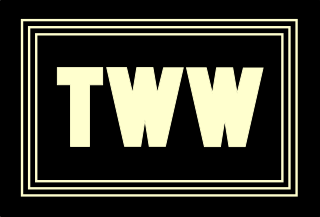
Television Wales and the West (TWW) was the British Independent Television contractor for a franchise area that initially served South Wales and West of England until 1968.

Chevron Corporation is an American multinational energy corporation predominantly specializing in oil and gas. The second-largest direct descendant of Standard Oil, and originally known as the Standard Oil Company of California, it is headquartered in San Ramon, California, and active in more than 180 countries. Within oil and gas, Chevron is vertically integrated and is involved in hydrocarbon exploration, production, refining, marketing and transport, chemicals manufacturing and sales, and power generation.
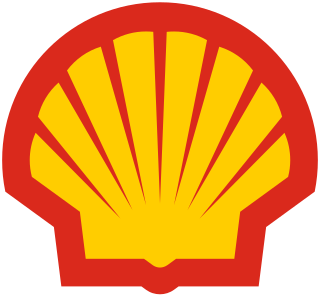
Shell USA, Inc. is the United States-based wholly owned subsidiary of Shell plc, a UK-based transnational corporation "oil major" which is amongst the largest oil companies in the world. Approximately 18,000 Shell employees are based in the U.S. Its U.S. headquarters are in Houston, Texas. Shell USA, including its consolidated companies and its share in equity companies, is one of America's largest oil and natural gas producers, natural gas marketers, fuel marketers and petrochemical manufacturers.
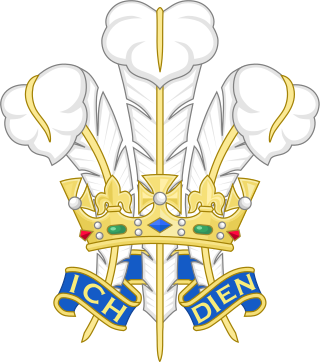
The Prince of Wales's feathers are the heraldic badge of the Prince of Wales, the heir to the British throne. The badge consists of three white ostrich feathers encircled by a gold coronet. A ribbon below the coronet bears the German motto Ich dien. As well as being used in royal heraldry, the feathers are sometimes used to symbolise Wales itself, particularly in Welsh rugby union and Welsh regiments of the British Army.

The Phillips 66 Company is an American multinational energy company headquartered in Westchase, Houston, Texas. Its name, dating back to 1927 as a trademark of the Phillips Petroleum Company, helped ground the newly reconfigured Phillips 66. The company today was formed ten years after Phillips merged with Conoco to form ConocoPhillips. The merged company spun off its refining, chemical, and retail assets into a new company bearing the Phillips name. It began trading on the New York Stock Exchange on May 1, 2012, under the ticker PSX.

The Welsh Dragon is a heraldic symbol that represents Wales and appears on the national flag of Wales.
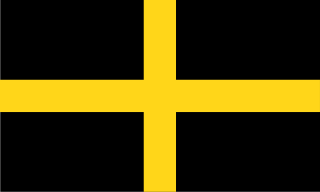
The flag of Saint David represents the 6th-century Saint David, a Welsh bishop of Menevia and the patron saint of Wales. It is normally a yellow cross on a black field, but it has also appeared as a black cross on a yellow field or with an engrailed cross.

A Royal Badge for Wales was approved in May 2008. It is based on the arms borne by the thirteenth-century Welsh prince Llywelyn the Great, with the addition of St Edward's Crown atop a continuous scroll which, together with a wreath consisting of the plant emblems of the four countries of the United Kingdom, surrounds the shield. The motto which appears on the scroll, PLEIDIOL WYF I'M GWLAD, is taken from the National Anthem of Wales and is also found on the Welsh designs for £1 coins minted from 1985 until 2000. The badge formerly appeared on the covers of Assembly Measures; since the 2011 referendum, it now appears on the cover of Acts passed by the Senedd and its escutcheon, ribbon and motto are depicted on the Welsh Seal.
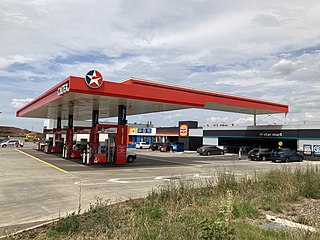
Caltex is a petroleum brand name of Chevron Corporation used in the Asia-Pacific region, the Middle East, and Southern Africa. Headquartered in Singapore, it is also the brand name of non-Chevron petroleum companies in some countries under a trademark licensing agreement with Chevron.

According to Rudolf Koch, the Dragon's Eye is an ancient Germanic symbol. The Dragon's Eye is an isosceles or equilateral triangle pointing downward, with a "Y" in the middle connecting the three points of the triangle together. According to Carl G. Liungman's Dictionary of Symbols, it combines the triangle meaning "threat" and the "Y" meaning a choice between good and evil.

ITV Wales and West, previously known as Harlech Television (HTV), was an ITV franchise area in the United Kingdom until 31 December 2013, licensed to a broadcaster by the regulator Ofcom.
This is a timeline of the history of S4C, originally the fourth-oldest terrestrial television channel in Wales. Until 2010 it carried a mixture of Welsh language programmes and programmes from Channel 4 which was not broadcast on analogue TV in Wales. In 2010, Channel 4 became available in Wales on all platforms and S4C became a Welsh-language-only channel.

The Welsh Rugby Union logo is the emblem used by the Welsh Rugby Union (WRU) and has become associated with Wales. The emblem is based on the Prince of Wales's feathers, a heraldic badge associated with the Prince of Wales since the early 17th century by British holders of the title, however the badge's English origin has prompted calls by some Welsh people for the WRU to change their logo for a design more historically linked to Wales. The use of the feathers by the WRU date back to its founding, with a stylistic modification of the logo taking place in the 1990s.
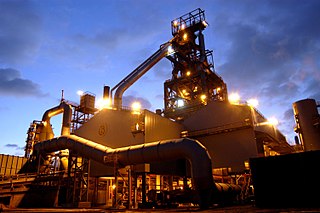
The manufacturing sector in Wales was historically centred on the mining industry, with slate, coal, tinplate and steel being important industries. Today, while traditional industries remain in smaller quantities, manufacturing in Wales is increasingly specialised and diverse, including parts of the automotive, aerospace, medical and technological industries.

The Armed forces in Wales are the military bases and organisation in Wales or associated with Wales. This includes servicemen and women from Wales and Welsh regiments and brigades of the British Armed Forces.



















